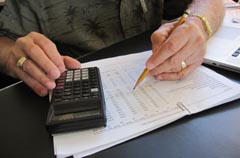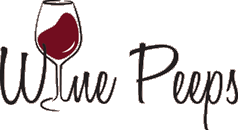QPR: How is it calculated and what does it really mean?
By John ~ April 11th, 2012.
 Getting right to the point, a high QPR Rating here on Wine Peeps means that the wine has a great price compared to wines of similar quality [i.e. same Quality Rating] within the same varietal/type. But there’s much more to the story.
Getting right to the point, a high QPR Rating here on Wine Peeps means that the wine has a great price compared to wines of similar quality [i.e. same Quality Rating] within the same varietal/type. But there’s much more to the story.
When we started publishing QPRs for all the wines we reviewed, there weren’t many wine writers using the term QPR. Now it seems that everyone is using the term as a buzzword for a wine they “feel†is a good deal. Commentary I read about QPR, or quality-to-price ratio, leads me to believe that it may be one of the most misunderstood terms in wine today.
Our QPR calculations often generate comments like, “That’s a $110 wine; how can it be a QPR 5? [our highest QPR rating…and, yes, it can]â€; or “At $7, this has to be a great QPR wine [no, it doesn’t].†Even other wine writers sometimes, mistakenly in our opinion, comingle Quality Ratings with QPR, writing things like, “I bumped this wine up to a 4 because it has such a good QPR.â€
Once we have assigned a Quality Rating to a wine and know the price of that wine, the QPR is determined by a mathematical calculation and not just a “feeling†about what a good deal it might be.
At Wine Peeps, we assign Quality Ratings on a five-star system, with five being the best. Mathematically, the QPR is found by dividing the price of the wine by the average price of its peers (all wines of the same varietal/type with the same Quality Rating in our database). Then we rate the wine’s QPR on a five-bangs scale, five being a wine that gives you the most bang for your buck. For a more complete explanation of our ratings system, visit our Wine Ratings page.
For example, if a $110 Cabernet Sauvignon has received a Quality Rating of 4.5 stars, it will have a QPR of 5 bangs for your buck because its price is less than ½ of the average of its peers [i.e. All Cabs in our database with a Quality Rating of 4.5]. On the other hand, a $110 Syrah that has received a Quality Rating of 4.5 would only have a QPR of 2 because the average price of a Syrah is much less than that of a Cab at the same Quality Rating level.
If a wine does not merit at least three stars in our Quality Rating, we will not recommend it. Therefore, one and two star wines will have a QPR = NR (not recommended). We cannot recommend that you purchase a wine, no matter how low the price, if it is not of at least good quality. That is why a $7 bottle of wine does not automatically merit a high QPR, although we have found some good quality wines with high QPRs in that price range.
So to reiterate what I said up front, a high QPR means that the wine has a great price compared to wines of similar quality [same Quality Rating] within the same varietal/type.
Taking our QPR rating of a wine and using it in your search for good deals on wines, we would suggest that the best bargains are wines of excellent quality (Quality: 4 stars or higher) that deliver the most bang for your buck (QPR: 5 bangs for your buck).
Happy wine shopping!
Filed under: General Wine Information, Miscellaneous

 Wine Peeps is an independent wine blog dedicated to helping you get the most bang for your buck in wine. We do this through blind tastings of wine from around the world and calculations of
Wine Peeps is an independent wine blog dedicated to helping you get the most bang for your buck in wine. We do this through blind tastings of wine from around the world and calculations of 










